Puliyodharai (Tamarind Rice) recipe is a super tasty South Indian dish! It’s tangy, spicy, and often served during festivals or at temples. I remember my grandma making it on busy days—it’s quick, flavorful, and even great for travel ! Not just food, it’s a dish full of tradition and memories!
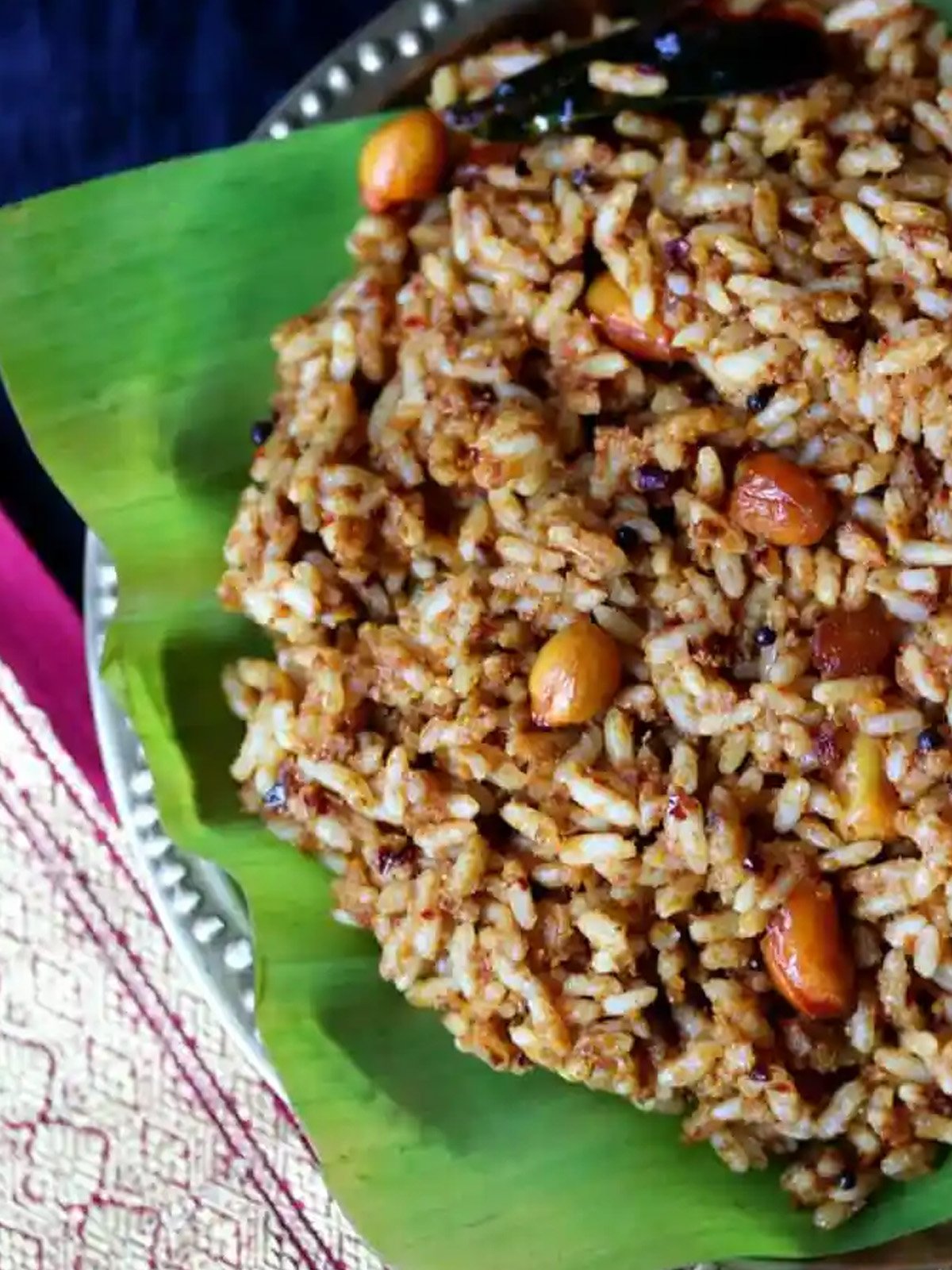
Jump to:
- About Puliyodharai - Tamarind Rice
- What is Puliyodharai?
- Health Benefits and Nutritional Value
- What You'll Need to Make This Puliyodharai-Tamarind Rice?
- How to Make Puliyodharai Recipe
- Regional Variations of Puliyodharai
- Serving Ideas & Pairing Suggestions for Puliyodharai
- Tips & Tricks for Making Perfect Puliyodharai
About Puliyodharai - Tamarind Rice
Puliyodharai, or Tamarind Rice recipe, has ancient roots, possibly dating back to the Chola dynasty or even earlier!
Tamarind has always been a key ingredient in South Indian cooking, adding tang and depth to many dishes. In fact, it's been a staple for centuries, loved for its zesty flavor.
Over time, Puliyodharai evolved, with different regions adding their own twist. For example, in Karnataka, some people add jaggery or coconut to balance the tanginess. Meanwhile, in Andhra Pradesh, the dish is made spicier with chili powder or ginger!
As a result, this dish has become a beloved comfort food across India, showcasing the diverse flavors and traditions of each state.
All things considered, whether you like it tangy or spicy, Puliyodharai has something for everyone!
What is Puliyodharai?
Puliyodharai, also known as Tamarind Rice, this recipe is a flavorful South Indian dish made with tamarind, spices, and rice.
It has strong roots in Tamil Nadu but is loved across southern India. Not only does it pack a tangy punch, but it’s also a quick and satisfying meal.
Puliyodharai- Tamarind Rice recipe is deeply tied to South Indian culture. It’s a must-have during festivals, temple offerings, and family picnics.
It’s especially famous for its long shelf life, which makes it perfect for travel—whether you're heading to school, on a road trip, or visiting family.
Puliyodharai (Tamarind Rice) recipe is easy to pack and carry, making it the go-to travel snack. Whether for a picnic or a long journey, it stays fresh and flavorful for hours!
Health Benefits and Nutritional Value
- Nutrient-Rich: Tamarind is packed with vitamin C, iron, and antioxidants. It supports digestion and detoxifies the body, making it a healthy addition to your diet.
- Vegan & Gluten-Free: Puliyodharai is naturally vegan and gluten-free, so it’s perfect for people with dietary restrictions. Whether you’re vegan or gluten-sensitive, it’s a great choice!
- Fiber-Rich Rice: If using brown or red rice instead of white rice, it’s an excellent source of fiber. This boosts digestion and keeps you fuller for longer. All in all, it's a wholesome, nutritious option!
Sambar Rice– Comfort in every bite
Classic Sambar– Bold, spicy goodness
Paneer Lababdar– Creamy indulgence with a twist
Rajma Rice– A hearty classic to savor
Tomato Rice– Zesty and vibrant, just like you!
What You'll Need to Make This Puliyodharai-Tamarind Rice?
Key Ingredients:
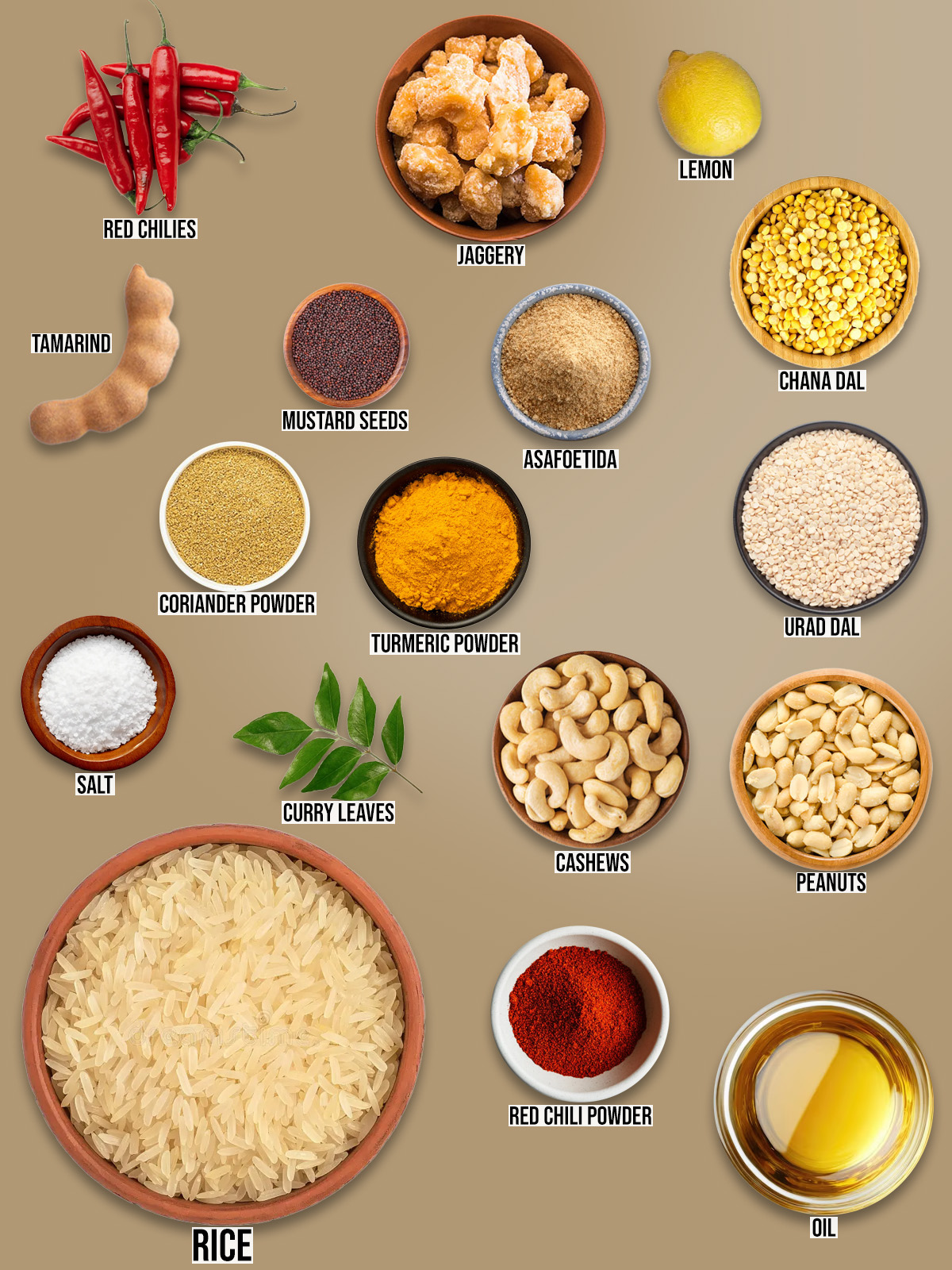
Ingredients Breakdown:
- Rice: Sona Masuri or Ponni rice is commonly used for this dish. The rice should be fluffy and separate, not mushy. I once mixed hot rice too soon, and it turned mushy—lesson learned the hard way!
- Tamarind: Fresh tamarind pulp is preferred for its vibrant and tangy flavor, as it adds a richer taste compared to pre-made paste. My grandmother always insisted on using fresh tamarind, and the flavor was always so much more vibrant!
- Spices:
- Mustard seeds create a pop and crackle in hot oil, while fenugreek seeds contribute a slight bitterness and depth.
- Chili powder provides heat,
- Hing (asafoetida) brings a savory punch
- Cumin seeds add a warm, earthy flavor.
- Dal: Urad dal and chana dal provide texture and nuttiness.
- Curry Leaves: Add fragrance and authenticity.
- Jaggery: A touch of jaggery balances the tartness of tamarind with sweetness.
- Tadka (Tempering): Tempering the spices in ghee or oil releases their essential oils, enhancing the flavor profile. I remember my mom saying, “Wait for the mustard seeds to pop!”—that's when I knew the magic was happening!
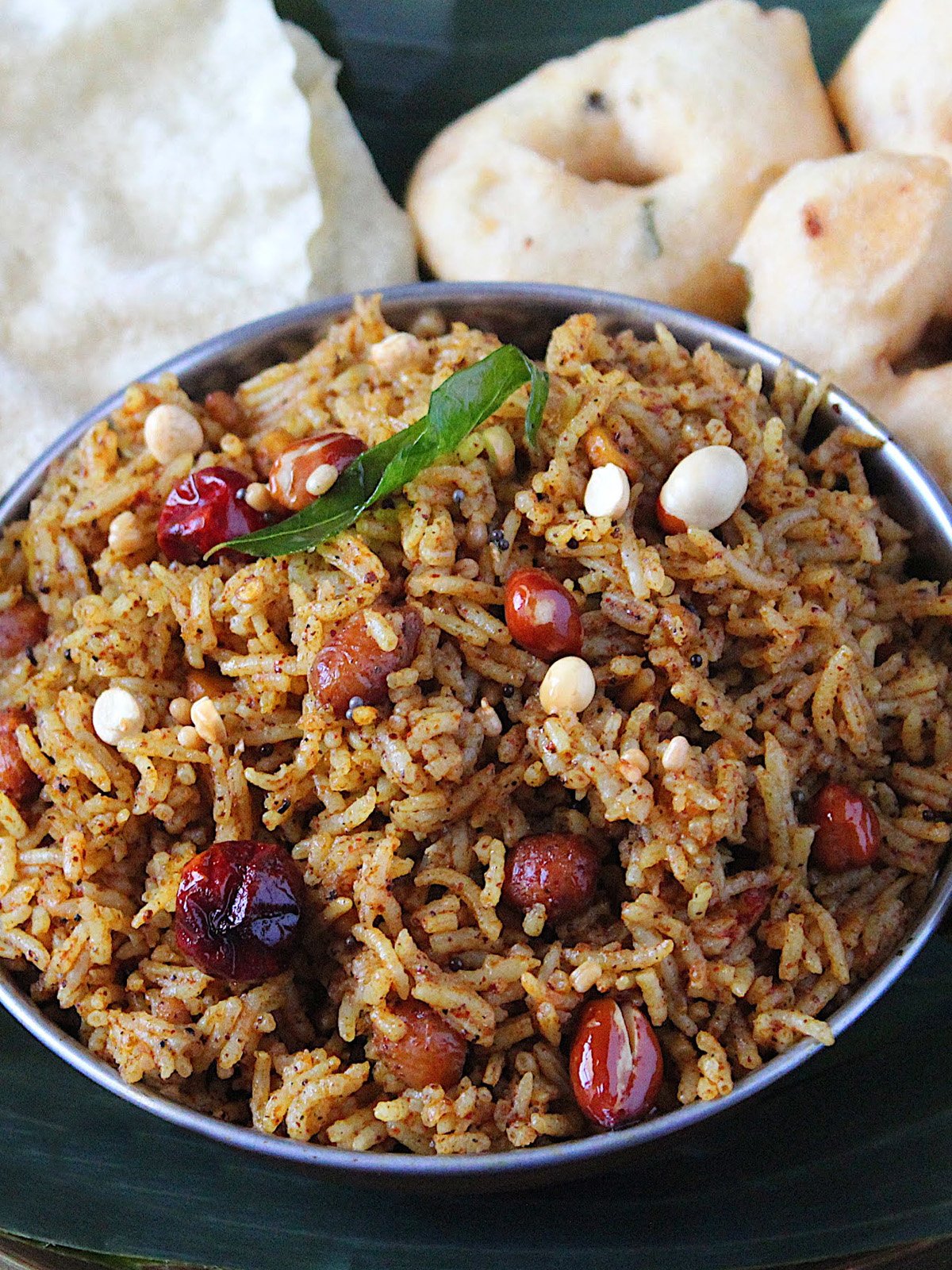
How to Make Puliyodharai Recipe
Step by Step Instructions-Tamarind Rice
1. Cooking the Rice
- First, rinse the rice thoroughly until the water runs clear to remove excess starch. This helps achieve that fluffy, non-sticky texture.
- Next, soak the rice for 15-20 minutes before cooking to ensure the grains cook evenly. If you’re using a rice cooker, follow the water-to-rice ratio (generally 1:1.5).
- Importantly, don’t stir the rice too much while it’s cooking to avoid breaking the grains. When it’s done, let it rest for 5 minutes to set.
2. Preparing the Tamarind Paste
- To begin with, soak a small lemon-sized ball of tamarind in warm water for 15 minutes. Afterward, extract the juice by pressing the tamarind.
- If, after tasting, the paste seems too bitter, simply add a pinch of jaggery or sugar to balance the flavors.
- Consequently, the tamarind paste should be tangy but not overwhelming, setting the perfect foundation for the dish.
3. Making the Puliyodharai Masala
- Firstly, dry roast coriander seeds, chana dal, and urad dal in a pan until golden and aromatic.
- Then, grind the roasted ingredients into a smooth powder using a blender or spice grinder. This masala will form the rich base of the dish.
- Not only does this masala bring a depth of flavor, but it also gives the Puliyodharai that unique earthy richness.
4. The Perfect Tadka
- Now, heat oil in a pan and add mustard seeds. Wait for them to pop, then toss in dried red chilies and curry leaves.
- Following this, add a pinch of asafoetida (hing) for an extra layer of fragrance. This creates the aromatic tempering or tadka.
- Finally, pour this hot, spiced tempering over the cooked rice, letting it infuse the grains with all the bold, flavorful aromas.
Regional Variations of Puliyodharai
- Tamil Nadu Style: Classic and tangy with a subtle sweetness from jaggery, this version uses seco rice to create a dense, hearty texture. Perfect for those who enjoy a balanced dish that’s both satisfying and flavorful. Additionally, the richness of tamarind shines through, offering an authentic taste of Tamil Nadu.
- Karnataka Style: Richer and more aromatic, this variation incorporates grated coconut or ghee, adding both creaminess and depth. Furthermore, the coconut enhances the dish, giving it a unique, tropical twist compared to other regional styles. In essence, it’s a slightly indulgent take on the classic puliyodharai.
- Andhra Style: Bold and fiery! Extra chili, peanuts, and ginger kick up the spice level, making it the go-to version for those who crave a stronger, more intense flavor. Thus, this style stands out for its robust heat and nutty crunch, ensuring a satisfying meal for spice lovers.
- Telangana Style: Crunchy and flavorful, this version includes fryum (papad) and lentils, along with a burst of curry leaves. The mix of textures and flavors creates a dynamic dish that’s both crunchy and aromatic, delivering a satisfying crunch in every bite. Moreover, this style is often enjoyed with a side of lentils, adding extra nutrition and taste.
Serving Ideas & Pairing Suggestions for Puliyodharai
Accompaniments:
- Raita: Serve with a cool cucumber or onion raita to balance the spice.
- Fried Papad: Crispy papads add crunch and texture for the perfect bite!
- Curry or Veg Side: Pair with a mild curry like dal tadka, vegetable korma, or avial for a flavorful combo.
Garnishing:
- Fried Peanuts & Cashews: Add crunch with fried peanuts and roasted cashews.
- Fried Curry Leaves & Coriander: Top with fried curry leaves and a sprinkle of coriander for extra color and flavor.
Tips & Tricks for Making Perfect Puliyodharai
1. Consistency of Masala: Cook the tamarind masala long enough to thicken, but don’t burn it! Timing is key for that perfect, flavorful balance.
2. Perfect Rice Texture: To avoid mushy rice, let the rice cool slightly before mixing it with tamarind paste. This helps keep the rice fluffy and prevents it from becoming clumpy!
3. Adjusting the Tanginess: Control the tamarind by adding more or less to suit your taste. Balance the sourness with a pinch of sugar or jaggery to make it just right!
4. Spice Level: Control the heat by adjusting chili powder. For a milder version, you can add coconut or yogurt to cool things down.
Did you try this Puliyodharai recipe? Leave a ⭐️⭐️⭐️⭐️⭐️ rating below and share it on Instagram, Facebook, and Pinterest!
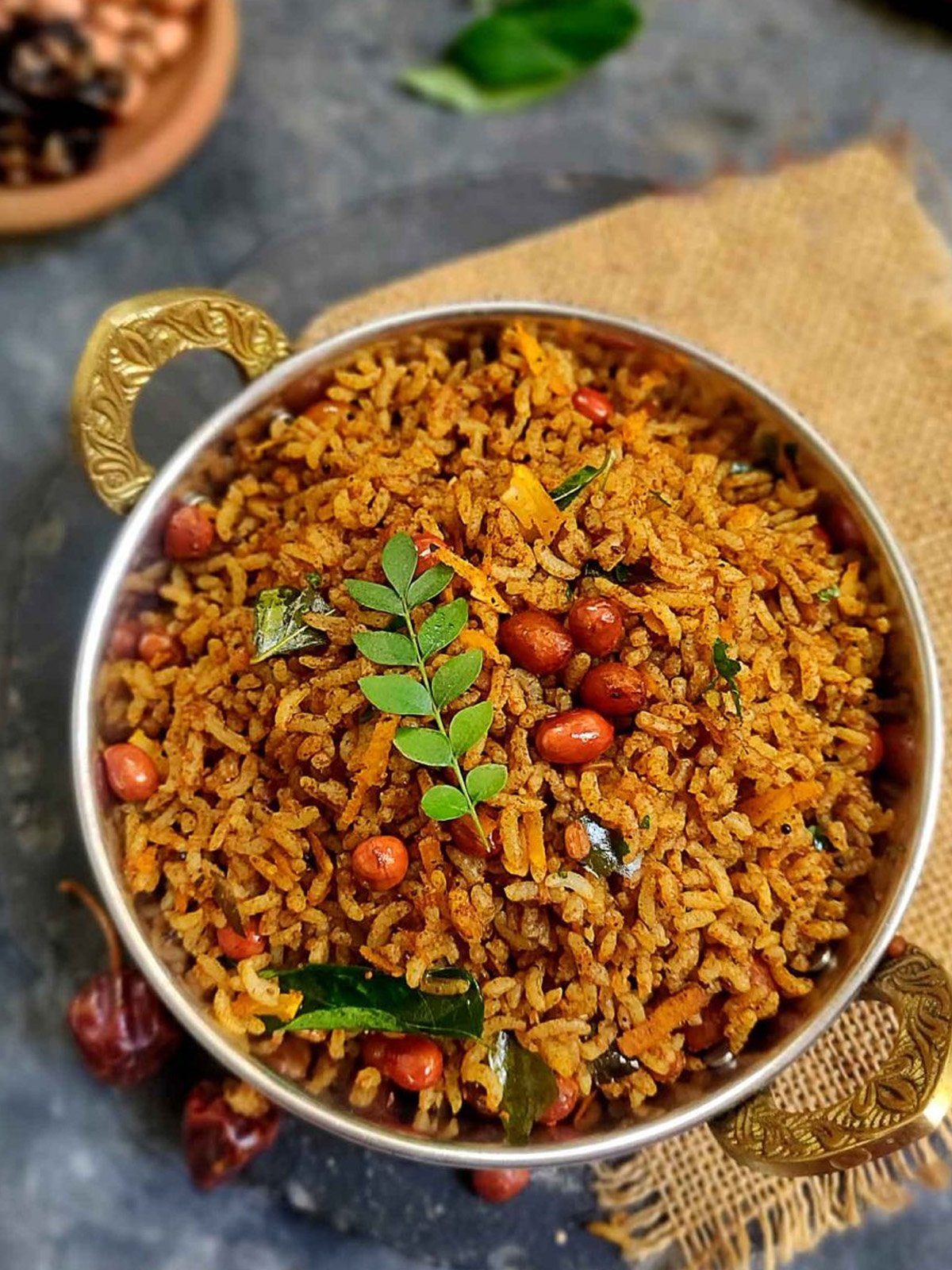
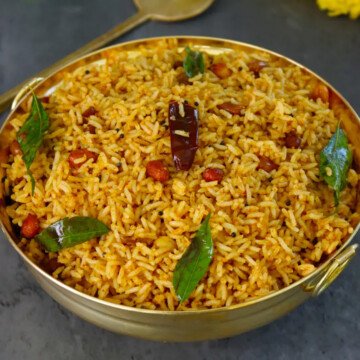
Puliyodarai – Tamarind Rice
Ingredients
For the Tamarind Paste:
- 1 Lemon-sized ball of tamarind
- 1 ½ Cup Water (for soaking tamarind)
- 2 tablespoon Sesame oil (gingelly oil)
- 1 teaspoon Mustard seeds
- 1 tablespoon Chana dal (split Bengal gram)
- 1 tablespoon Urad dal (split black gram)
- 3 Dried red chilies, broken
- A pinch of asafoetida (hing)
- 10-12 Curry leaves
- 1 teaspoon Turmeric powder
- 2 teaspoon Red chili powder
- 2 teaspoon Coriander powder
- Salt to taste
- 1 tablespoon Jaggery (optional)
For the Rice:
- 1 ½ Cup Raw rice (Basmati or Sona Masoori)
- 2 ½ Cup Water (to cook rice)
- 1 tablespoon Sesame oil (to prevent sticking)
- Salt to taste
For Garnishing:
- 2 tablespoon Roasted peanuts
- 2 tablespoon Roasted cashews (optional)
Instructions
Cooking the Rice
- First, rinse the rice thoroughly until the water runs clear to remove excess starch. This helps achieve that fluffy, non-sticky texture.
- Next, soak the rice for 15-20 minutes before cooking to ensure the grains cook evenly. If you’re using a rice cooker, follow the water-to-rice ratio (generally 1:1.5).
- Importantly, don’t stir the rice too much while it’s cooking to avoid breaking the grains. When it’s done, let it rest for 5 minutes to set.
Preparing the Tamarind Paste
- To begin with, soak a small lemon-sized ball of tamarind in warm water for 15 minutes. Afterward, extract the juice by pressing the tamarind.
- If, after tasting, the paste seems too bitter, simply add a pinch of jaggery or sugar to balance the flavors.
- Consequently, the tamarind paste should be tangy but not overwhelming, setting the perfect foundation for the dish.
Making the Puliyodharai Masala
- Firstly, dry roast coriander seeds, chana dal, and urad dal in a pan until golden and aromatic.
- Then, grind the roasted ingredients into a smooth powder using a blender or spice grinder. This masala will form the rich base of the dish.
- Not only does this masala bring a depth of flavor, but it also gives the Puliyodharai that unique earthy richness.
The Perfect Tadka
- Now, heat oil in a pan and add mustard seeds. Wait for them to pop, then toss in dried red chilies and curry leaves.
- Following this, add a pinch of asafoetida (hing) for an extra layer of fragrance. This creates the aromatic tempering or tadka.
- Finally, pour this hot, spiced tempering over the cooked rice, letting it infuse the grains with all the bold, flavorful aromas.
Notes
Regional Variations of Puliyodharai
-
- Tamil Nadu Style: Classic and tangy with a subtle sweetness from jaggery, this version uses seco rice to create a dense, hearty texture. Perfect for those who enjoy a balanced dish that’s both satisfying and flavorful. Additionally, the richness of tamarind shines through, offering an authentic taste of Tamil Nadu.
-
- Karnataka Style: Richer and more aromatic, this variation incorporates grated coconut or ghee, adding both creaminess and depth. Further more, the coconut enhances the dish, giving it a unique, tropical twist compared to other regional styles. In essence, it’s a slightly indulgent take on the classic puliyodharai.
-
- Andhra Style: Bold and fiery! Extra chili, peanuts, and ginger kick up the spice level, making it the go-to version for those who crave a stronger, more intense flavor. Thus, this style stands out for its robust heat and nutty crunch, ensuring a satisfying meal for spice lovers.
-
- Telangana Style: Crunchy and flavorful, this version includes fryum (papad) and lentils, along with a burst of curry leaves. The mix of textures and flavors creates a dynamic dish that’s both crunchy and aromatic, delivering a satisfying crunch in every bite. Moreover, this style is often enjoyed with a side of lentils, adding extra nutrition and taste.




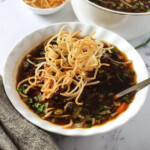

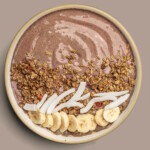



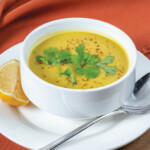

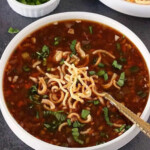
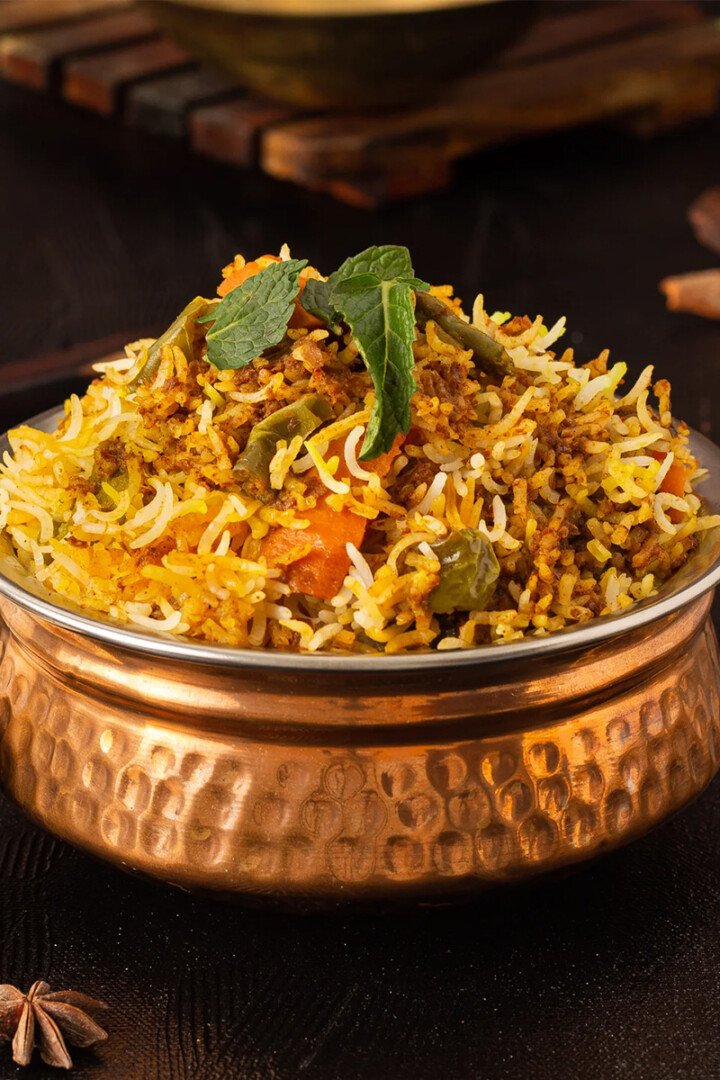
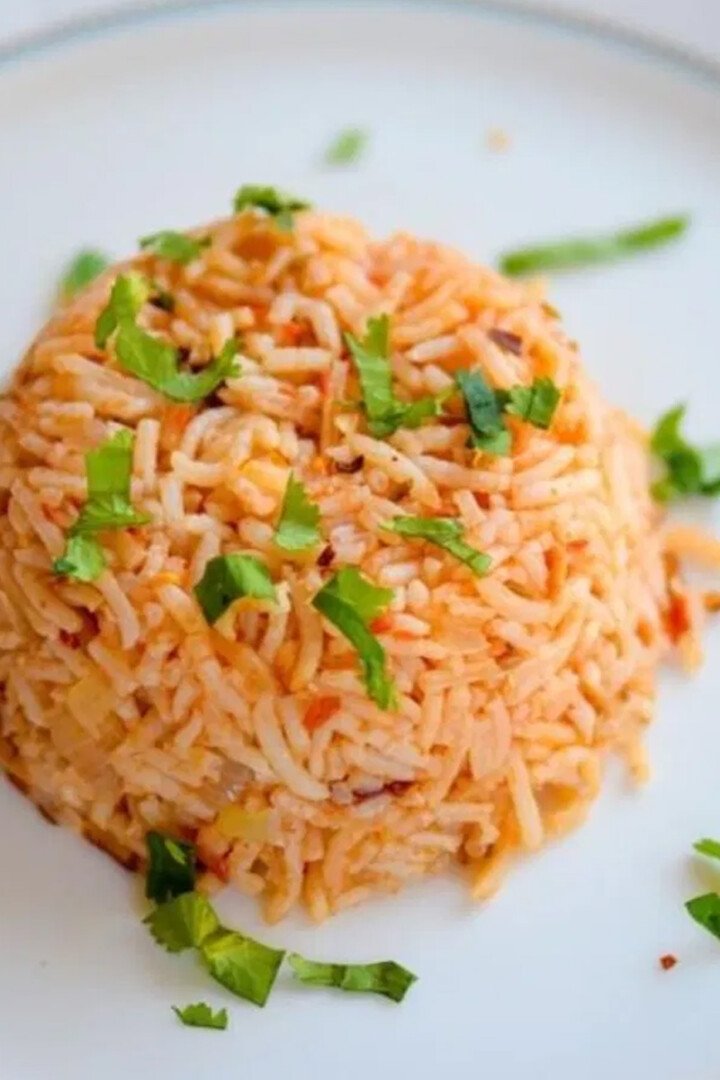
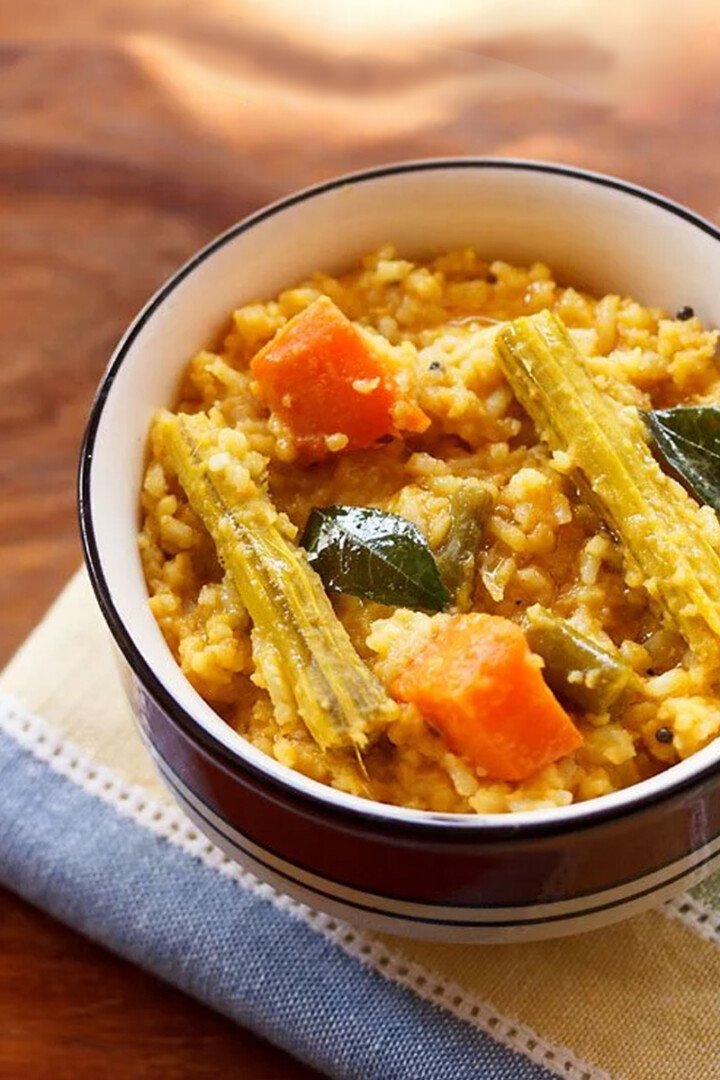
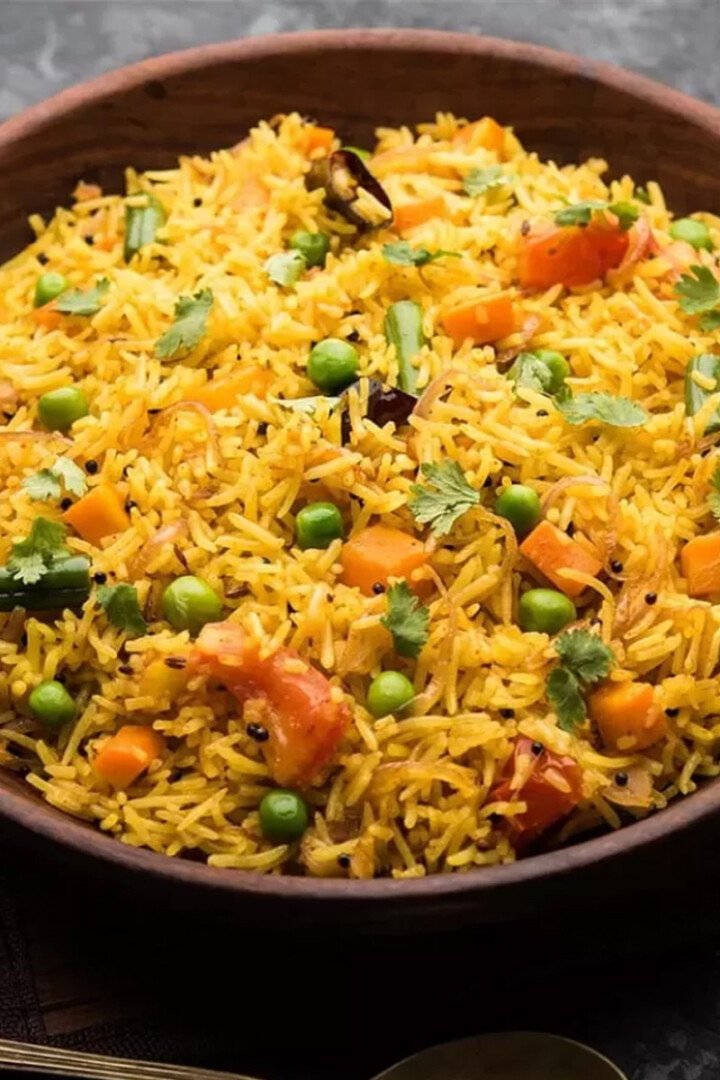
Leave a Reply